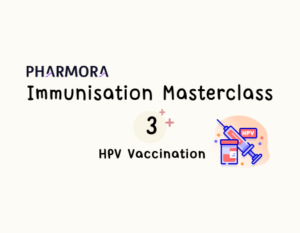 By Pasha Yuen
By Pasha Yuen

International HPV Awareness Day, observed annually on 4th March, serves as a crucial initiative to enhance public understanding of human papillomavirus (HPV). This global campaign aims to educate individuals about what HPV is, the risks associated with the virus, and the preventive measures that can be taken to curb its spread. By raising awareness, the day encourages informed decision-making, promotes vaccination, and highlights the importance of regular screenings in preventing HPV-related diseases.
Introduction to HPV
Human Papillomavirus (HPV) is a common virus with over 100 subtypes. It can be spread through sexual activity; through penetrative intercourse or skin-to-skin genital contact. Whilst most HPV subtypes are harmless and classified as low-risk, some high-risk HPVs are associated with serious health conditions – including cervical, anal and throat cancers, and also genital warts. The subtypes HPV 16 and HPV 18 account for over 70% of HPV-associated cervical cancer cases in women, and over 80% of HPV-associated oropharynx (throat) cancer in men. The table below summaries the HPV subtypes and disease associated with them (Burd, 2003).
Amongst all HPV-related cancers, cervical cancer is the most common. 99% of cervical cancer cases are associated with chronic HPV infection. Women between the ages of 18 to 30 are more prone to HPV infection. However, cervical cancer typically develops later, often after the age of 35, highlighting the slow progression of the disease. Whilst cervical cancer remains one of the leading causes of cancer-related deaths worldwide, in the UK, the 10-year survival rate is up to 86.8%. Encouragingly, most cervical cancer cases are preventable through early detection and vaccination (Cervical cancer statistics | Cancer Research UK). To learn more about cervical cancer protection, read our blog on cervical screening!
Who should get the HPV vaccine?
In the UK, the routine adolescent and universal HPV vaccination programme has been available since 2008 and expanded to include males in 2019. School children who are in school Year 8 (around 11 to 13 years old), are eligible for one dose of HPV vaccine, which is paid for by the UK National Health Service (NHS). Even if you missed the dose in school, you will still be eligible until your 25th birthday – so contact your GP today if you live in the UK and have not received your HPV vaccine yet!
In addition to the vaccination programme for school age children, a vaccination programme is also available in the UK for all males who have sex with men. Those under the age of 25 require only one dose, whereas men aged 25 and above should receive two doses for optimal protection.
The Importance of HPV Vaccination
Vaccination is understood to be an effective preventive measure against infectious diseases such as influenza and, more recently, COVID-19; but what exactly does the HPV vaccine do? Whilst most HPV subtypes are not harmful, the vaccine protects against high-risk HPV strains that can cause cancer.
In the UK, Gardasil 9 is used for protection against HPV 6, 11, 16, 18, 31, 33, 45, 52, and 58. Since the introduction of the immunisation programme, HPV vaccine coverage (first dose) has reached 77% in female and 71% in male. This has led to a significant reduction in cervical cancer cases. A UK-based joint study reported an 83.9% reduction of cervical cancer rates when comparing a vaccinated cohort and a reference cohort of people who have never received HPV vaccination. As cervical cancer is a fatal condition if it is not caught and treated early enough, these vaccinations have saved countless lives.
Common Myths about HPV Vaccination
Myth #1 – Is it safe?
One of the most common concerns regarding HPV vaccines is the lack of safety data as it is perceived as a newly developed vaccine. Whilst the established history of HPV vaccination might not be as long as flu vaccines, HPV vaccines have been used for over a decade worldwide and have a very well-documented safety profile.
The most common adverse events or side effects are injection site reaction, such as pain, redness, or swelling in the arm, or mild vaccine-related systemic reactions, for example dizziness, nausea, and headache. Severe allergic reactions are extremely rare, occurring in only three cases per one million vaccinated individuals. Extensive clinical trials have been conducted to ensure the safety of the vaccine, before being granted approval from health care authorities such as the FDA or the EMA. Effort has also been made for post-marketing surveillance to ensure safety, allowing the public to report any side effects. Since HPV vaccine has been marketed, there have been millions of people protected from all the risks associated with infection, and only 7 fatal cases have been reported, none of which were considered related to the vaccine.
Myth #2 – Only female needs vaccination
Although cervical cancer is the most well-known HPV-related cancer, men are also at risk of developing HPV-related cancers, such as throat, penile, and anal cancer. Apart from the risk of developing cancer themselves, they can also act as a virus carrier and spread it to other people. Since HPV is spread through sexual intercourse, vaccinating both men and women is essential to achieving herd immunity and reducing the overall prevalence of the virus.
Steps to Take for HPV Awareness Day
As International HPV Awareness Day approaches, taking proactive steps can make a meaningful difference in the fight against HPV. By ensuring vaccinations are up to date and sharing accurate information, we can help reduce stigma, dispel misconceptions, and protect future generations from HPV-related diseases. Small actions, such as having conversations with loved ones or promoting awareness within your community, can contribute to a healthier, more informed society. Let’s work together to spread knowledge and prevention, one step at a time!